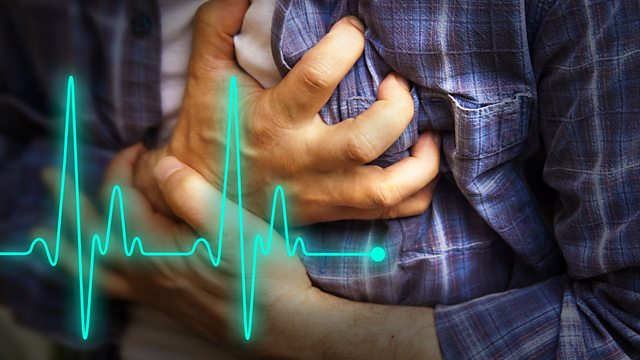
Flu Increases Risk of Heart Attack
Flu can increase risk of heart attack; Nerve agents; 3D printed prosthetic limbs; Bear cubs; Chronic pain; The future of food; Circadian light
Having flu or pneumonia increases the risk of having a heart attack or stroke for a few days or weeks after the infection according to a new study. For many years doctors have noticed a connection. But new research has now linked specific microbes to the heart attacks and strokes – using data from Scottish hospitals. Claudia Hammond spoke to Dr Charlotte Warren-Gash, Associate Professor of Epidemiology at the London School of Hygiene & Tropical Medicine.
Nerve Agents
The nerve agent that has made a Russian ex-spy and his daughter seriously ill in the English town of Salisbury has been traced to the front door of their home. That came to light earlier this week in the continuing investigation into the poisoning of Sergei Skripal and his daughter Yulia. But what do we now know about the deadly nerve agent – novichok - and others like it? Hamish Bretton-Gordon a former commander of the UK Chemical, Biological, Radiological and Nuclear Regiment tells Roland Pease when deadly chemical weapons of mass destruction first appeared.
3D Printed Prosthetic Limbs
3D printed prosthetic limbs are helping a Jordanian hospital treat Syrian war refugees. Gareth Mitchell talks to Safa Herfat from MSF about replicating the project elsewhere.
Why Bear Cubs Are Spending Longer With Their Mothers
Brown bear cubs living in the forests of Sweden are spending longer with their mothers. Baby bears stay by their mother's side until they are aged two-and-a-half - an extra year compared with a few decades ago, according to a study. Adam Rutherford spoke to Joanie Van de Walle of the Université de Sherbrooke in Quebec, Canada and Andreas Zedrosser from the University of Southeast Norway. They were part of the team that has been watching these bears for more than thirty years.
Chronic Pain
Doctors are using a new form of spinal cord stimulation or neuromodulation to help patients with chronic back pain. Every year 1 in 10 adults is diagnosed with chronic pain which is pain that lasts for longer than three months. A small electrical field is delivered to the spine via a wire - to modify the pain signals the body sends to the brain. Now doctors in London have altered the frequency of the electrical impulses to try and reduce any side effects. Bobbie Lakhera went to see an operation in action.
The Future of Food
Increasing urbanisation and changing diets mean that we’re going to have to get more adventurous in our dining habits. Either that or food production needs to jump some 60 percent by 2050 to stop us all going hungry. That’s why a restaurant in London is trying to make one food source more palatable. It is offering diners jellyfish, and as Marnie Chesterton reports, one way they will persuade you is by immersing you in a multi-sensory experience.
Circadian Light
When working or studying, some people resort to a strong cup of coffee to perk themselves up. But new research suggests better lighting might also help. Scientists monitored what happened to staff when they improved the lighting in gloomy US Embassy offices in Iceland and Latvia – where there is little daylight during the winter months. They found that people felt perkier with more powerful, blue-white lights. Claudia Hammond spoke to Dr Mariana Figueiro of the Lighting Research Center (LRC) at Rensselaer Polytechnic Institute in New York State.
(Photo caption: Man having chest pain – credit: Getty Images)
The Science Hour was presented by Gareth Mitchell with comments from ���˿��� Health and Science reporter Helen Briggs
Producer: Katy Takatsuki
Last on
More episodes
Broadcast
- Sat 31 Mar 2018 11:06GMT���˿��� World Service Americas and the Caribbean
Podcast
-
![]()
Unexpected Elements
The news you know, the science you don't

